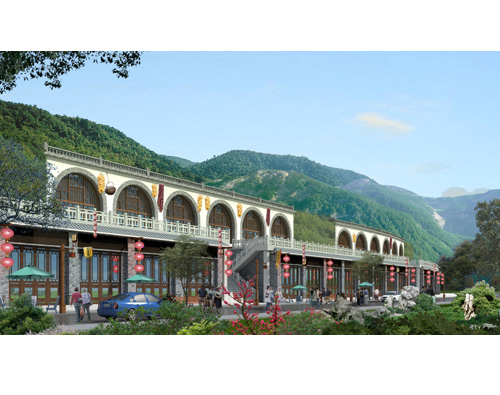Project Proposal It is a document submitted by the project investor to its competent department, and is currently widely used in the national project approval of the project. To prepare the project proposal, the necessity and possibility of project establishment should be discussed from a macro perspective, and the assumption of project investment should be changed into a general investment proposal. The submission of the project proposal can be used by the project approval authority to make preliminary decisions. It can reduce the blindness of project selection and lay the foundation for the next feasibility study.
Main contents of project proposal
1. Name of the project investor, production and operation profile, legal address, name and position of the legal representative, and name of the competent unit;
2. Necessity and feasibility of project construction;
3. Market analysis of project products;
4. Project construction content;
5. Production technology and main equipment. Describe the advancement, applicability and reliability of technology and equipment, as well as important technical and economic indicators;
6. Demand and solutions for main raw materials, water, electricity, gas and transportation;
7. Number, composition and source of employees;
8. Investment estimation, including the fixed capital and working capital to be invested;
9. Investment mode and source of funds;
10. Preliminary estimation of economic benefits.
Details of project proposal

1. Basic content of project proposal
The project proposal (also known as the application for project establishment) is a proposal document for a specific project proposed by the project construction preparation unit or project legal person according to the development of the national economy, the national and local medium and long-term planning, industrial policies, productivity layout, domestic and foreign markets, and the internal and external conditions of the location. It is a general framework idea for the proposed project. For large and medium-sized projects, some of which are complex in process technology, involve a wide range of areas, and coordinate a large number of projects, the feasibility study report should be prepared as one of the main annexes of the project proposal.
According to different industry categories, the focus of the feasibility study content varies greatly.
2. Project proposal preparation requirements
According to the current regulations, the construction project refers to the construction unit that is composed of one or several unit projects within the scope of an overall design or preliminary design, with unified economic accounting and unified administrative management. Therefore, a unified project proposal shall be prepared for the main works, supporting works and ancillary facilities that are subject to unified economic accounting within the scope of an overall design or preliminary design; Within the scope of an overall design, project proposals shall be prepared for each project with independent economic accounting; For phased construction projects within the scope of an overall design, project proposals shall also be prepared separately.
Follow Gansu Feasibility Study Report Same, Lanzhou Project Proposal The preparation of shall meet the following requirements:
(1) Authentic content: The content involved in the project proposal and the data reflecting the situation should be as authentic and reliable as possible to reduce deviations and errors. The materials and data used in it should be verified repeatedly to ensure the authenticity of the content.
(2) Accurate prediction: the project proposal is an activity before the investment decision, which is predictive and forward-looking. It is the research before the event, and it is also the estimation of the future development, possible problems and results of the event. Therefore, it is necessary to carry out in-depth investigation and research, fully possess information, and use realistic prediction methods to scientifically predict future prospects.
(3) Strict argumentation: argumentation is a prominent feature of the project proposal. To make it argumentative, we must use systematic analysis methods to conduct comprehensive and systematic analysis around various factors affecting the project, including macro analysis and micro analysis.
Basic framework of project proposal
Chapter I General
1. Project name
2. Overview of the Undertaker (the new project refers to the situation of the preparatory unit, and the technical transformation project refers to the situation of the original enterprise)
3. Proposed location
4. Construction content and scale
5. Construction period
6. Investment estimate
7. Benefit analysis
Chapter II Necessity and Conditions of Project Construction
1. Analysis on the necessity of construction
2. Analysis of construction conditions: including site construction conditions (geology, climate, transportation, public facilities, land acquisition and demolition, construction, etc.), and other conditions (policies, resources, laws and regulations, etc.)
3. Resource condition evaluation (referring to resource development projects): including resource availability (geological mineral reserves, recoverable reserves, etc.), resource quality (mineral grade, physical properties, etc.), resource occurrence conditions (ore body structure, burial depth, rock mass properties, etc.)
Chapter III Construction Scale and Product Scheme
1. Construction scale (scale after reaching the production standard)
2. Product scheme (product scheme to be developed)
Chapter IV Technical Proposal, Equipment Proposal and Engineering Proposal
1、 Technical proposal
1. Production method (including raw material route)
2. Process flow
2、 Main equipment scheme
1. Model selection of main equipment (list)
2. Main equipment source
3、 Project plan
1. Architectural characteristics, structure and area scheme of buildings and structures (attached with plan and planning drawings)
2. Estimation of construction and installation quantities and "three materials" consumption
3. List of Main Buildings and Structures
Chapter V Investment Estimation and Fund Raising
1、 Investment estimation
1. Construction investment estimation (first summarize the total investment, then separately describe the construction cost, equipment purchase and installation cost, etc.)
2. Working capital estimation
3. Investment estimation table (total capital estimation table, single project investment estimation table)
2、 Financing
1. Self raised funds
2. Other sources
Chapter VI Benefit Analysis
1、 Economic benefits
1. Sales revenue estimation (prepare sales revenue estimation table)
2. Cost estimation (prepare the total cost table and itemized cost estimation table)
3. Profit and tax analysis
4. Payback period
5. Investment profit rate
2、 Social benefits
Chapter VII Conclusion
Chapter VIII Annex
1. Topographic map of the proposed location of the construction project
2. For the construction on the self owned land, the preliminary site selection opinions (planning points or other documents) of the city planning department for the project construction shall be attached.
3. For projects whose development is restricted by the state or which need to be signed by the competent department of the industry in accordance with the provisions of the state and the municipal government, the review opinions signed by the competent department of the industry concerned shall be attached.
Foreign funded projects shall be attached with the following materials:
(1) Foreign funded credit certification materials issued by accounting firms.
(2) Business licenses of all parties to the joint venture (copies).
(3) The letter of intent signed by the parties to the joint venture (the domestic unit shall have the opinions of the superior competent department).
For projects jointly constructed by two or more domestic units, the following materials shall be attached:
(1) . Letter of Intent signed by all parties to the joint construction (with comments from the superior competent department).
(2) Business license of each party to the joint construction (copy).
(3) Other accessory materials.









